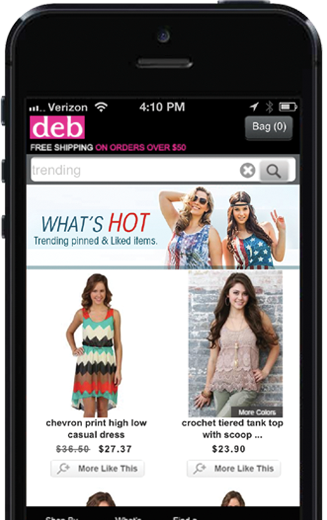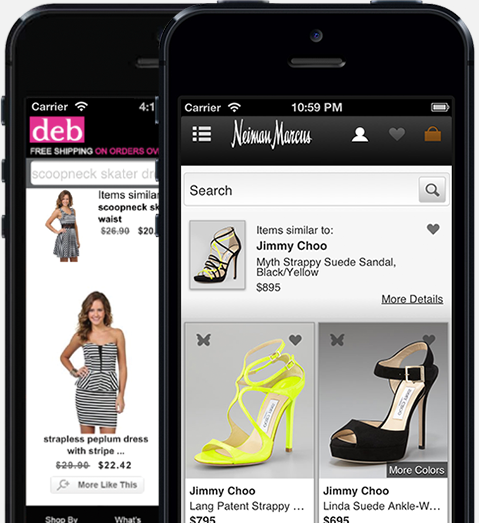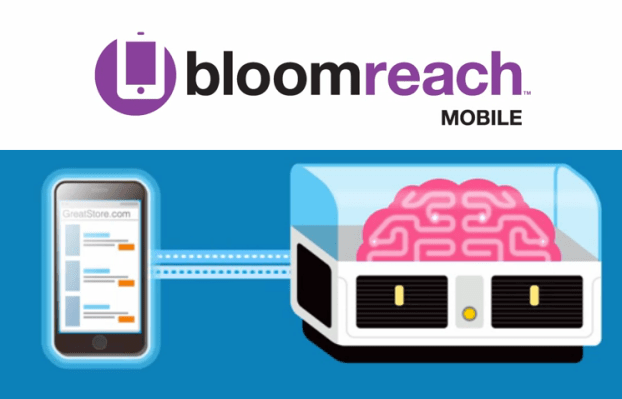The shift to mobile is sucking the money out of e-commerce, but BloomReach thinks big data can save the day. Today it brings its big-data content optimization SaaS to the small screen to add smart product recommendations, predictive search, a trending section and cross-device personalization to the mobile presence of any business. BloomReach makes your app more relevant to boost sales with data science.
It’s already working on the web. The startup crawls the web learning what people search for, click on, and share. It then uses the information to improve a business’s ads, point them to personalized landing pages for each visitor, and show potential customers the products they’re most likely to buy.
 After some prying, BloomReach CEO Raj De Datta admitted the company earns “in the several tens of millions of dollars of revenue per year.” That builds BloomReach’s $41 million in funding led by Bain Capital Ventures. Its clients include top e-commerce brands like Neiman Marcus, Pottery Barn, ModCloth and Shutterfly, as well as sites like Yahoo.
After some prying, BloomReach CEO Raj De Datta admitted the company earns “in the several tens of millions of dollars of revenue per year.” That builds BloomReach’s $41 million in funding led by Bain Capital Ventures. Its clients include top e-commerce brands like Neiman Marcus, Pottery Barn, ModCloth and Shutterfly, as well as sites like Yahoo.
De Datta (awesome big-data CEO name, by the way) tells me his clients were having trouble with mobile. Dollars on the web were turning into dimes on phones and tablets. “A bunch of customers said they were seeing rapid increases in mobile traffic, but it wasn’t monetizing the way the desktop does.”
Design was at the center of the problem. “They were re-skinning the website for the mobile phone. Our perspective is that the mobile user is totally different. They don’t have the attention span, they don’t have the screen real-estate, they don’t type. They use a tap interface. A user on mobile shouldn’t see the same content.”
So BloomReach built a subscription suite of four premium mobile APIs that businesses can hook into to bring the intelligence of big data to their mobile design. De Datta demos the product in this short interview:
Here are the important features:
What’s Hot adds a trending products section to a site or app. It looks at which product pages are getting the most referral traffic from sites like Facebook and Pinterest to offer real-time product recommendations.
Predictive Search analyzes an app/site plus 150 million websites and 1 billion consumer interactions to predict what visitors will search for from just a character or two. It then lets them pick their query from a typeahead so they can type less while finding what they’re looking for.
Visual Browsing suggests “more products like this” so potential customers can discover items similar to what they’re looking at. BloomReach analyzes navigation patterns of other users and on-site signals to know which products to suggest.
Cross-Device Retargeting is a big step toward unified identity, allowing businesses to know if a web and mobile visitor are the same person even if they aren’t logged in. It analyzes every available signal, including browsing patterns and network locations, to match your devices and use what a site knows about you to personalize its mobile experience.

Here’s what that all means. You open a shoe store’s mobile shopping app and see a What’s Hot section showing the most shared shoes on Facebook and Pinterest. You see one pair you like and click “more like this” to get an array of shoes in similar colors, styles and price ranges. You go to search for a specific make and as soon as you type in “D” it pre-fills the search box with “Nike Dunks.” And since someone from the same Wi-Fi network browsed Nike Dunks on sale at the same time yesterday on their desktop, the app knows you’re the same person, and shows you the shoes on sale at the top. All of this is powered by BloomReach.
The big-data service can’t do everything, though. These are only APIs so businesses have to build their own branded design on top. If skinned poorly, the features could seem awkwardly shoe-horned in. BloomReach is not helping with driving new mobile traffic like it does on the web. It can unlock a brand’s latent potential on mobile, but it won’t turn a no-name brand into a hit.
There’s also no way to opt out of its cross-device tracking, identification and retargeting. The data will make a mobile site or app more relevant, though in a way that might make some feel uncomfortable.
We may need to get used to that. The identity disconnect between mobile and the web is costing companies too much money to remain unsolved. Startups like BloomReach are willing to push the frontier of tracking if it gets people buying on mobile.
